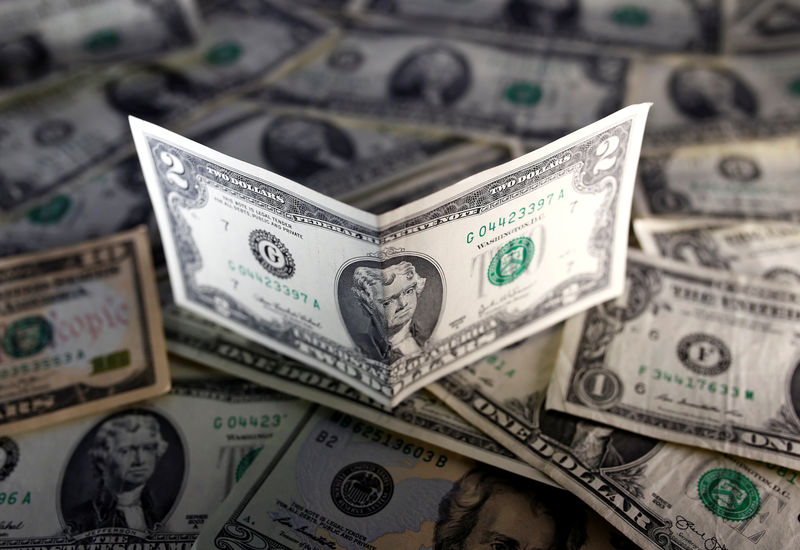By Gina Lee
Investing.com – The dollar was down on Thursday morning in Asia, remaining near multi-week lows as falling gains in U.S. Treasury yields diminished the safe-haven U.S. currency’s interest-rate advantage.
The U.S. Dollar Index that tracks the greenback against a basket of other currencies inched down 0.03% to 91.105 by 12:51 AM ET (4:51 AM GMT).
The USD/JPY pair inched down 0.10% to 107.94, close to a seven-week low.
The AUD/USD pair inched down 0.10% to 0.7743 and the NZD/USD pair was down 0.30% to 0.7190.
The USD/CNY pair inched down 0.04% to 6.4874, with the onshore yuan rising to its strongest level since Mar. 12. at 6.4828 per dollar.
The GBP/USD pair inched down 0.01% to 1.3928.
Investors are looking to the European Central Bank (EBC) policy decision, which will be handed down later in the day. Any positive comments from the central bank about the economic outlook or hints of tapering bond purchases are widely expected to boost the euro. The single currency was trading at $1.2043, not far from a record level set on Mar. 3.
The ECB is widely expected to maintain its current policy when it meets later in the day, but some investors anticipate that the meeting will indicate whether ECB will slow down bond-buying from June onwards. De Nederlandsche Bank president Klaas Knot has already said tapering is possible, and the euro could resume its rise against the dollar.
Monetary policy remains a focus as the Bank of Canada signaled that it could start raising interest rates in late 2022 after cutting the pace of bond purchases, becoming the first Group of Seven central bank to move towards withdrawing unprecedented stimulus. The Canadian dollar climbed to a six-week high on Wednesday, and last traded at 1.2500 against its U.S. counterpart.
The risk-sensitive Australian and New Zealand dollars also traded near one-month highs against the dollar, as improving economic outlooks in the Antipodean countries make their central banks more likely to follow the Reserve Bank of Canada’s footsteps.
Investors have also turned away from the greenback as U.S. Treasury yields reversed their climbs in March 2021, but some retained a more positive outlook in the long term over a strong U.S. economy and an improving COVID-19 vaccine rollout.
An auction of 20-year Treasuries drew strong demand on Wednesday, which helped the fixed income market regain its footing and capped yields.
“We’ve confirmed that demand for Treasuries is healthy, which means there is no upward pressure on yields... in this environment, the dollar will test the downside against the yen. The euro is different because there are signs that people inside the ECB are more optimistic about the economy, which raises questions about tapering,” IG Securities senior foreign exchange strategist Junichi Ishikawa told Reuters.
